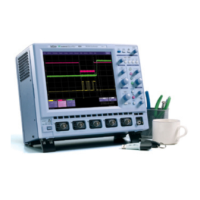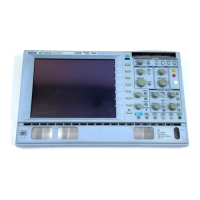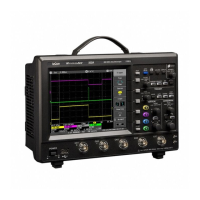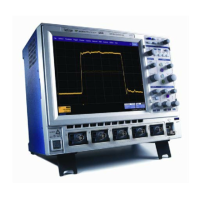Operator's Manual
104 WS-OM-E Rev B
Top Higher of two most probable
states, the lower being base; it is
characteristic of rectangular
waveforms and represents the
higher most probable state
determined from the statistical
distribution of data point values
in the waveform.
Value of most probable
higher state
Gives similar result
when applied to time
domain waveform or
histogram of data of
same waveform. But
with histograms, result
may include
contributions from more
than one acquisition.
WidthN Width measured at the 50%
level and negative slope.
Width Width of cyclic signal determined
by examining 50% crossings in
data input. If first transition after
left cursor is a rising edge,
waveform is considered to
consist of positive pulses and
width the time between adjacent
rising and falling edges.
Conversely, if falling edge,
pulses are considered negative
and width the time between
adjacent falling and rising edges.
For both cases, widths of all
waveform pulses are averaged
for the final result.
Width of first positive or
negative pulse
averaged for all similar
pulses
WAVEFORM MATH
Introduction to Math Traces and Functions
With the instrument’s math tools you can perform mathematical functions on a waveform
displayed on any channel, or recalled from any of the four reference memories M1 to M4. You can
also chain dual math functions: f(g(x)).
Two-input Math Functions
Arithmetic operators (+, -, x, /) require two source inputs. These inputs can be channel traces,
zooms, or memory traces. You can use a channel input with a math or memory trace, but you
cannot use a zoom trace with a channel, memory, or math trace for these operations. That is, a
zoom trace can only operate on another zoom trace.

